From wigs to petticoats, what can Georgian fashion tell us about the period and its people?
Words by Felicity Day
What was Georgian fashion?
From towering, feather-topped wigs and embroidered frock-coats to ribbon-tied bonnets and empire-line gowns, Georgian fashion arguably boasts some of the most iconic trends in British history. Familiar right around the world thanks to globe-trotting portraits and block-busting period dramas, they make conjuring up a mental picture of the men and women of the era of Hogarth and Austen easy enough. But as two London exhibitions are set to show this spring, rifling through Georgian wardrobes can tell us so much more about this colourful period and its people than simply what they looked like: changing Georgian fashion provides us with a fascinating insight into everything from technological innovation and trade, to social change and current affairs.
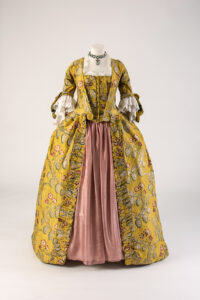
Dress – and the fashionable silhouette – did, of course, change substantially in the hundred years or so between the accession of George I in 1714 and the death of his great-great-grandson, George IV, in 1830. Early Georgian women favoured opulent gowns draped over increasingly wide hooped petticoats, worn with stiff corsets; while the men wore extravagant full-skirted coats, heeled shoes and shoulder-length wigs.
By the early 1800s, however, the most stylish ladies were no longer marching from ballroom to opera box in the narrower, yet still heavily structured dresses of striped and brocaded silks that had held sway in the 1760s and 1770s, when they were complemented by the exaggeratedly elaborate hair-dos. Instead, they were gliding about in slim, plain, high-waisted muslin gowns inspired by the style of ancient Greece, paired with flat slippers and natural curls. Often low-cut, near-transparent and prone to clinging to their bodies, the new dresses were a style transformation too far for some, prompting vociferous complaints about the ‘present fashion of nudity’ – though inevitably some commentators hailed the reappearance of the ‘female form’ with relish.
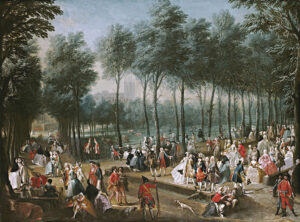
Modish men, meanwhile, were no longer beating a path from their townhouse to the gaming table in the breeches, waistcoats, lacy cuffs and sparkling shoe buckles that had still been de rigueur in the last decades of the 18th century. Instead, they were wearing practical riding boots and tightly fitting coats in muted shades, their powdered wigs swapped for close-cropped haircuts and early forms of the top hat. Soon they, too, would adopt a shocking new trend: trousers.

How did Georgian fashion change?
Seismic political events, in particular the French Revolution, are generally agreed to have played a big part in the evolution of Georgian fashion. Just as the fashionable French ditched their flamboyant and overtly expensive clothing for something that matched the new egalitarian fervour, so, too, did their British counterparts, who had always looked to Paris for sartorial advice – and who feared that to be too richly dressed was to court a similar fate to the aristocrats who had lost their heads to Madame la Guillotine. The consequent war with France, and more specifically, wartime taxes on powder, helped to hasten the demise of wigs and powdered hair-dos. And changing behaviours influenced clothing, too, as men, particularly, chose practical dress more suited to their increasingly active lifestyles.
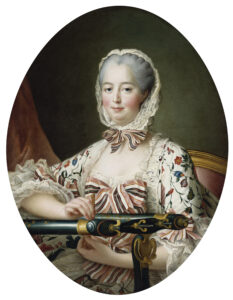
“It is amazing how much you can learn about Georgian society when looking at the period through a fashion history lens,” agrees Anna Reynolds, curator of the Style & Society: Dressing the Georgians exhibition at the Queen’s Gallery, which brings together artwork and objects from the Royal Collection – from fans to snuff boxes – with garments and fabrics loaned by other museums. “The British were expanding their global reach through trade, travel and empire, and elements of clothing from the Ottoman Empire, India and China gradually slipped into everyday styles,” she points out by way of another example. Turbans proved a big hit, as did shawls imported from India or the East, and ‘chinoiserie’ fabric that incorporated Chinese motifs.
Georgian fashion also attests to the breadth of industrial innovation in the period. “Advancements introduced many new coloured dyes,” Reynolds adds – like the vibrant yellow worn to stunning effect by theatre impresario David Garrick’s wife, Eva-Maria, in their double portrait, on display at the exhibition.
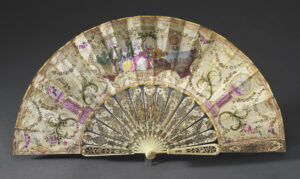
However, while style generally kept pace with the rapidly changing times, in one place, time stood still as far as fashion was concerned. At the royal court, the wide hooped mantuas, outdated by the 1750s, and ludicrously difficult for their female wearers to manoeuvre through doorways, remained mandatory right up until 1820 – as did the equally outmoded velvet or satin frock-coat and breeches combination for gentlemen. But then, as highlighted by Kensington Palace’s Crown to Couture exhibition – their biggest ever, pairing spectacular examples of court dress with modern-day couture worn by stars like Lady Gaga – dressing up for the Georgian court was always more like dressing up for the 21st-century red-carpet: the privilege of an immoderately wealthy minority, celebrities of their day, whose attendance in sumptuous, eye-catching garb was more akin to a performance, intended to reinforce their social status.
In any case, lords and ladies were no longer the only ones setting the trends. As likely to be fashion ‘influencers’ were actresses and courtesans, or well-connected commoners, like ‘Beau’ Brummell, labelled by some the father of modern menswear. Aristocrats were no longer the only consumers of fashion, either. “A growing professional class, who had made their money in trade or the burgeoning financial industry, were able to afford many of the same items as the established elite,” notes Reynolds.
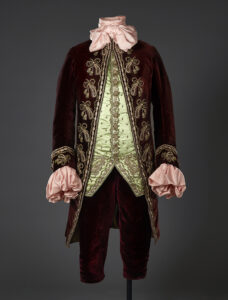
Not to mention that the vogue for simple gowns made of cotton – which could, thanks to industrial innovations, be mass produced at varying price points – meant that fashion was more accessible than ever before. With the emergence of a specialised fashion press sharing detailed images, and the rise of venues like the pleasure gardens, where the smart set rubbed shoulders with those lower down the social ladder, cutting-edge fashion was more visible to a wider audience than ever, too.
It was something that visitors to Britain were apt to notice, surprised to see that country girls had “bodices of chintz, straw hats on their heads and scarlet cloaks” and that even “the poorest maid servant” was “careful to be in fashion”. What might surprise us more is that Georgian fashion was sustainable in a strikingly modern sense, with recycling, up-cycling and buying second-hand the norm, reflecting the considerable value that clothing held for rich and poor. “Garments were constructed in ways that allowed them to be easily adapted as fashions changed,” says Reynolds. And “they were considered valuable enough to warrant itemisation and careful description in account books, marriage contracts, wills, and even adverts offering rewards for stolen goods.”
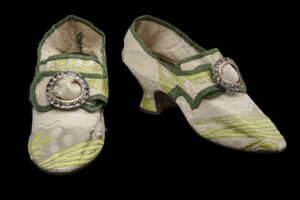
It’s just one more way that fashion enables us to learn about one of the most vibrant periods in British history, an era of unprecedentedly rapid social and economic change. Clothes maketh the man, the old saying goes, but perhaps they also maketh the age.
This is an extract, read the full version in the May/June issue of BRITAIN, available to buy here from 7 April.
Read more:

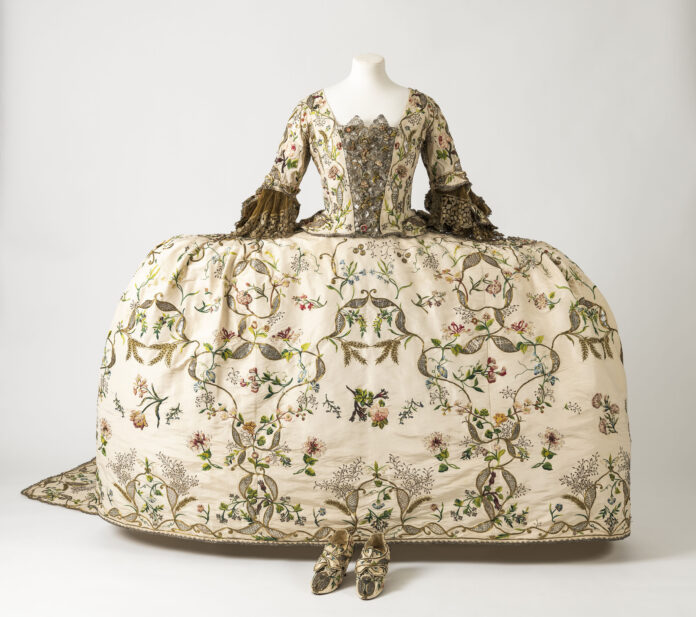




 © 2024
© 2024